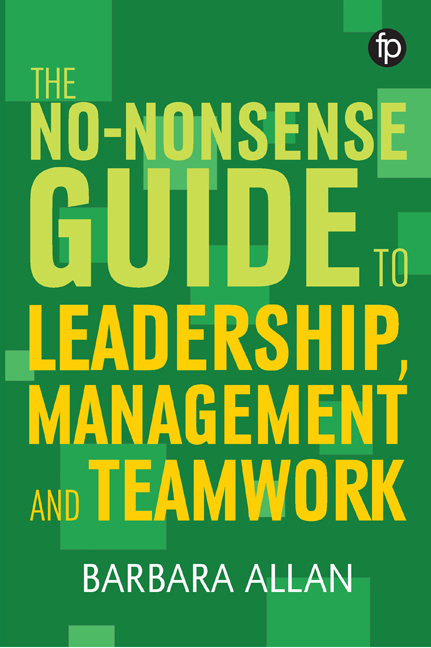Book contents
- Frontmatter
- Contents
- List of figures
- List of tables
- List of case studies
- Acknowledgements
- 1 Leadership, management and teamwork today
- 2 Getting started
- 3 Strategic leadership
- 4 Confident leadership and management
- 5 Leading and managing your team
- 6 Managing the work
- 7 Project management
- 8 Introducing and managing change
- 9 Communications
- 10 The people side of management
- 11 Managing money
- 12 Lifelong professional development
- Index
4 - Confident leadership and management
Published online by Cambridge University Press: 01 June 2019
- Frontmatter
- Contents
- List of figures
- List of tables
- List of case studies
- Acknowledgements
- 1 Leadership, management and teamwork today
- 2 Getting started
- 3 Strategic leadership
- 4 Confident leadership and management
- 5 Leading and managing your team
- 6 Managing the work
- 7 Project management
- 8 Introducing and managing change
- 9 Communications
- 10 The people side of management
- 11 Managing money
- 12 Lifelong professional development
- Index
Summary
Introduction
This chapter is concerned with generic approaches to management and leadership, and explores the following topics: building consensus; creative thinking; decision making; diversity and inclusion; ethical decision making; problem solving; negotiating; and conflict management. Topics concerned with managing people, including setting objectives, delegating tasks, giving instructions, giving feedback and managing performance are considered in Chapter 6.
Building consensus
Library leaders and managers who are introducing new ideas or change must build consensus, i.e. gain overwhelming agreement from their team(s), in order to implement change with the support of colleagues. The management literature provides many different approaches to consensus building and it typically involves the following activities.
Involve as many people as possible in the process and frame it as a co-operative rather than an adversarial process.
Share the proposal with the evidence supporting it. Make sure the proposal is clearly outlined and that any assumptions are highlighted.
Listen to feedback and clarify any misunderstandings.
Listen to concerns and respond to them.
Manage conflict through open and honest discussions.
Identify suggestions and, as appropriate, merge them into the original proposal.
Explore alternatives and their pros and cons.
If appropriate, build criteria lists and score alternative solutions.
Give colleagues time to think about the proposal. Depending on the context and the decision, this process may take several days or weeks to complete.
Once there is an overwhelming consensus then ask colleagues to give their consent to go ahead. This means accepting the overwhelming consensus even if some individuals do not support it.
Case study 4.1 Consensus building in libraries
Ford (2012) provides a detailed analysis of decision making through consensus and considers its application in libraries. She ends her blog with the following comments:
Libraries that successfully engage in consensus decision-making will see improvement in making decisions that best serve their patrons; more cohesion in staff and accountability; and are likely to experience more creativity in problem solving. Individuals in these libraries will most likely become more dedicated to serving the organization and working towards its shared vision and mission. The reason these changes may occur, is that the decision-making and visioning is shared – individuals all contribute to the definition of and accomplishment of goals. Individuals would begin creating an environment of respect and trust, enabling them to participate in a democratic decision-making process.’
- Type
- Chapter
- Information
- Publisher: FacetPrint publication year: 2019



